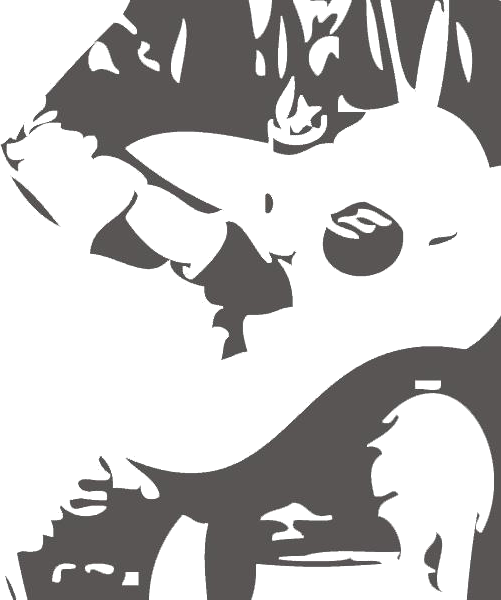Gibson GB4 c 1918 | SOLD | (v2303) The 'Jazz Age' of the early 20th century ushered in a need for the louder banjo sound in a variety of instruments to cut through the larger combos of the era. Althought the so-called 'banjo guitar' had been around since the mid-ninteenth century, Gibson got on board in 1919. The Gibson TB (tenor banjo) was introduced in 1918, and the GB (guitar banjo) and MB (mandolin banjo) appeared the next year with similar specs with size, scale length etc. specific to that particular instrument. The original offering was called the GB, but by 1923, it was renamed the GB4. The 'trapdoor' resonator was offered as an option in 1922.
The guitar banjor we offer here is one of the earliest known produced. Gruhn's serial number list dates it to 1919 through 1922, but in another entry in his book, he states an intro date of 10/9/18. The impressed serial number on the stick is 180, placing its manufacture in the early part of the serial number listing. Also, the elegantly curved 'open book' headstock is rarely seen on any GB/GB4 extant, but was found on the earliest TBs. One thing to rectify is the presence of the trapdoor resonator, onlh an option beginning in 1922. We believe that the early owner of this GB bought the resonator at a later date and added it as an upgrade, which was simply a screw-on process. Regardless of its origins, this example, with its unique headstock shape and beautiful orange/red sunburst, stands above its kin as the apex of its ilk.
The head on this GB measures 12" in diameter, typical GBs are 14" through 1924. The rim features both a dowel stick and a coordinator rod, and has the optional arm rest attached. The maple rim is stained an attractive red-orange. The trapdoor resonator is screwed on to the back of the rim and features the hinged door and clip so that the trapdoor can be secured in the open position for a different sound. The trapdoor features celluloid binding and a circle of 'rope' purfling. The neck is laminated maple and is carved in a comfortable 'C'-shape. The fingerboard is ebony with multiple pearl position dots. The head stock features the open-book curve, an ebony overlay and 'The Gibson' and a fleur-de-lis inlaid in pearl. The back of the head stock is painted black and blends into the darker laminate in the neck. The tuners are engraved with leaf clusters. The heel cap is topped with an ebony overlay and bound in white celluloid.
The head measures 12". Scale length is ~ 24 3/4". The neck measures 1 3/4" across at the nut, and string spacing is 2 1/4" across at the saddle.
The GB appears 100% original but for the bridge and maybe the nut. It retains its original hard case. There are no evident prior repairs. We recently leveled and dressed the frets. The back of the neck shows some play wear. Action is set at 9/64", and although high-ish by guitar standards, the GB plays well.
Overall, a striking instrument with rare features in excellent original condition.
Comes with its original hard case (one epoxy-like repair).
Check out the sound clip!
The guitar banjor we offer here is one of the earliest known produced. Gruhn's serial number list dates it to 1919 through 1922, but in another entry in his book, he states an intro date of 10/9/18. The impressed serial number on the stick is 180, placing its manufacture in the early part of the serial number listing. Also, the elegantly curved 'open book' headstock is rarely seen on any GB/GB4 extant, but was found on the earliest TBs. One thing to rectify is the presence of the trapdoor resonator, onlh an option beginning in 1922. We believe that the early owner of this GB bought the resonator at a later date and added it as an upgrade, which was simply a screw-on process. Regardless of its origins, this example, with its unique headstock shape and beautiful orange/red sunburst, stands above its kin as the apex of its ilk.
The head on this GB measures 12" in diameter, typical GBs are 14" through 1924. The rim features both a dowel stick and a coordinator rod, and has the optional arm rest attached. The maple rim is stained an attractive red-orange. The trapdoor resonator is screwed on to the back of the rim and features the hinged door and clip so that the trapdoor can be secured in the open position for a different sound. The trapdoor features celluloid binding and a circle of 'rope' purfling. The neck is laminated maple and is carved in a comfortable 'C'-shape. The fingerboard is ebony with multiple pearl position dots. The head stock features the open-book curve, an ebony overlay and 'The Gibson' and a fleur-de-lis inlaid in pearl. The back of the head stock is painted black and blends into the darker laminate in the neck. The tuners are engraved with leaf clusters. The heel cap is topped with an ebony overlay and bound in white celluloid.
The head measures 12". Scale length is ~ 24 3/4". The neck measures 1 3/4" across at the nut, and string spacing is 2 1/4" across at the saddle.
The GB appears 100% original but for the bridge and maybe the nut. It retains its original hard case. There are no evident prior repairs. We recently leveled and dressed the frets. The back of the neck shows some play wear. Action is set at 9/64", and although high-ish by guitar standards, the GB plays well.
Overall, a striking instrument with rare features in excellent original condition.
Comes with its original hard case (one epoxy-like repair).
Check out the sound clip!

